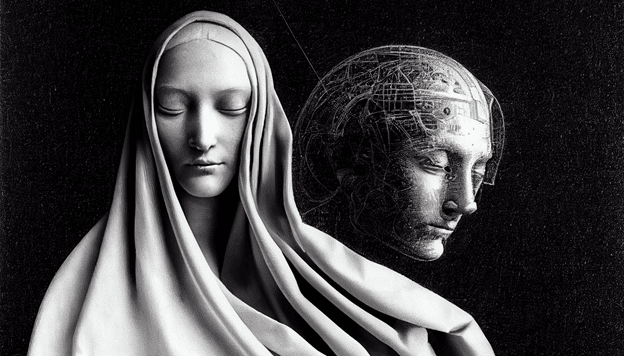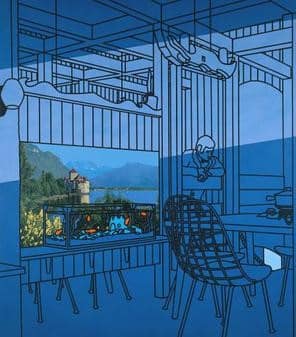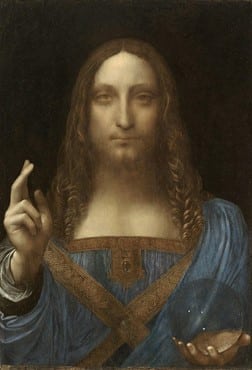Alien invasions. Gritty dystopian megacities. Battlefields swarming with superheroes. As one of Hollywood’s top concept artists, Drew Leung can visualize any world you can think of, except one where AI takes his job.
He would know. He’s spent the past few months trying to make it happen, testing every AI tool he could. “If your whole goal is to use AI to replace artists, you’ll find it really disappointing,” Leung said.
Pros and amateurs alike, however, are finding these new tools intriguing. For amateur artists — who may barely know which way to hold a paintbrush — AI gives them almost miraculous capabilities.
Thanks to AI tools such as Midjourney, OpenAI’s Dall·E, DreamStudio, and open-source software such as Stable Diffusion, AI-generated art is everywhere, spilling out across the globe through social media such as Facebook and Twitter, the tight-knit communities on Reddit and Discord, and image-sharing services like Pinterest and Instagram.
The trend has sparked an uproarious discussion in the art community. Some are relying on AI to accelerate their creative process — doing in minutes what used to take a day or more, such as instantly generating mood boards with countless iterations on a theme.
Others, citing issues with how the data used to train these systems is collected and managed, are wary. “I’m frustrated because this could be really exciting if done right,” said illustrator and concept artist Karla Ortiz, who currently refuses to use AI for art altogether.
NVIDIA’s creative team provided a taste of what these tools can do in the hands of a skilled artist during NVIDIA founder and CEO Jensen Huang’s keynote at the most recent NVIDIA GTC technology conference.

Highlights included a woman representing AI created in the drawing style of Leonardo da Vinci and an image of 19th-century English mathematician Ada Lovelace, considered by many the first computer programmer, holding a modern game controller.
More Mechanical Than Magical
After months of experimentation, Leung — known for his work on more than a score of epic movies including Black Panther and Captain America: Civil War, among other blockbusters — compares AI art tools to a “kaleidoscope” that combines colors and shapes in unexpected ways with a twist of your wrist.
Used that way, some artists say AI is most interesting when an artist pushes it hard enough to break. AI can instantly reveal visual clichés — because it fails when asked to do things it hasn’t seen before, Leung said.
And because AI tools are fed by vast quantities of data, AI can expose biases across collections of millions of images — such as poor representation of people of color — because it struggles to produce images outside a narrow ideal.
New Technologies, OId Conversations
Such promises and pitfalls put AI at the center of conversations about the intersections of technology and technique, automation and innovation, that have been going on long before AI, or even computers, existed.
After Louis-Jacques-Mandé Daguerre invented photography in 1839, painter Charles Baudelaire declared photography “art’s most mortal enemy.”
With the motto, “You push the button, we do the rest,” George Eastman’s affordable handheld cameras made photography accessible to anyone in 1888. It took years for 19th-century promoter and photographer Alfred Stieglitz, who played a key role transforming photography into an accepted art form, to come around.
Remaking More Than Art
Over the next century new technologies, like color photography, offset printmaking and digital art, inspired new movements from expressionism to surrealism, pop art to post-modernism.

The emergence of AI art continues the cycle. And the technology driving it, called transformers, like the technologies that led to past art movements, is driving changes far outside the art world.
First introduced in 2017, transformers are a type of neural network that learns context and, thus, meaning, from data. They’re now among the most vibrant areas for research in AI.
A single pretrained model can perform amazing feats — including text generation, translation and even software programming — and is the basis of the new generation of AI that can turn text into detailed images.
The diffusion models powering AI image tools, such as Dall·E and Dall·E 2, are transformer-based generative models that refine and rearrange pixels again and again until the image matches a user’s text description.
More’s coming. NVIDIA GPUs — the parallel processing engines that make modern AI possible — are being fine-tuned to support ever more powerful applications of the technology.
Introduced earlier this year, the Hopper FP8 Transformer Engine in NVIDIA’s latest GPUs will soon be embedded across vast server farms, in autonomous vehicles and in powerful desktop GPUs.
Intense Conversations
All these possibilities have sparked intense conversations.
Artist Jason Allen ignited a worldwide controversy by winning a contest at the Colorado State Fair with an AI-generated painting.

Philosophers, ethicists and computer scientists such as Ahmed Elgammal at Rutgers University are debating if it’s possible to separate techniques that AI can mimic with the intentions of the human artists who created them.
Ortiz is among a number raising thorny questions about how the data used to train AI is collected and managed. And once an AI is trained on an image, it can’t unlearn what it’s been trained to do, Ortiz says.
Some, such as New York Times writer Kevin Roose, wonder if AI will eventually start taking away jobs from artists.
Others, such as Jason Scott, an artist and archivist at the Internet Archive, dismiss AI art as “no more dangerous than a fill tool.”
Such whirling conversations — about how new techniques and technologies change how art is made, why art is made, what it depicts, and how art, in turn, remakes us — have always been an element of art. Maybe even the most important element.
“Art is a conversation we are all invited to,” American author Rachel Hartman once wrote.
Ortiz says this means we should be thoughtful. “Are these tools assisting the artist, or are they there to be the artist?” she asked.
It’s a question all of us should ponder. Controversially, anthropologist Eric Gans connects the first act of imbuing physical objects with a special significance or meaning — the first art — to the origin of language itself.
In this context, AI will, inevitably, reshape some of humanity’s oldest conversations. Maybe even our very oldest conversation. The stakes could not be higher.
Featured image: Portrait of futuristic Ada Lovelace, playing video games, editorial photography style by NVIDIA’s creative team, using Midjourney.
